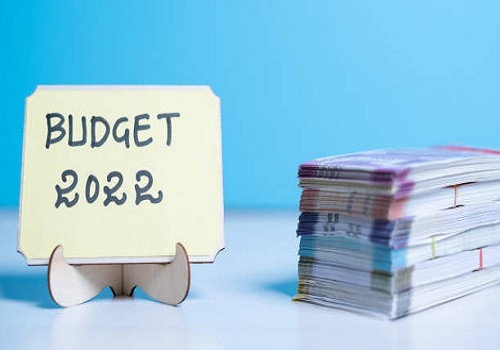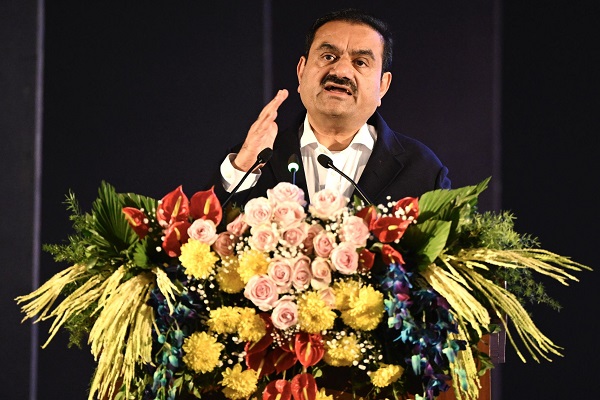Union Budget 2022 preview : A need of consumption stimulus for rapidly reviving the economy - Choice Broking

A need of consumption stimulus for rapidly reviving the economy
What we expect the budget to focus on:
* Extension of GST aid to States
When the GST Act was passed, state governments were guaranteed compensation (at a rate of 14% from the base year FY16) by the central government for any shortfall in tax revenue on their switch to GST regime. This compensation is to be paid for five years from the launch of GST regime i.e. from Jul. 2017 to Jun. 2022. To fund this guaranteed compensation, central government introduced compensation cess on luxury and demerit goods. But due to economic slowdown arising from the Covid-19 pandemic, central and state governments experienced negative revenue shocks. The designated compensation cess fund too witnessed shortfall in FY21 and FY22, which lead to borrowings of around Rs. 1.1lakh crore in FY21. In FY22, the shortfall was anticipated to be Rs. 1.58lakh crore, but due to strong growth in both direct and indirect taxes, the borrowing requirement may be lower. GST council in Sept. 2021, extended the levy of compensation cess until Mar. 2026, but this was done only to enable central government to repay the loans taken to compensate the states for the GST collection shortfall in FY21 and any shortfall arising in FY22. Moreover, during the extended period, the compensation cess collection will not be shared with the states.
With already fragile fiscal positions (of state governments) and relatively higher share in overall government spending, it would be prudent for the central government to extend the revenue compensation mechanization by another 3-5 years. This can be done with an amendment to the GST Act.
* Continuation of the reform process:
The government with its clear intent has tried to bring several reforms in the past one year, which may overall improve the threshold growth of the economy. For instance it brought potentially transformative reforms in the agricultural marketing, labor market, asset monetization/privatization etc., which could have addressed the structural issues of the economy. But with massive protest on sections of the population, the government seems to be on back foot. Recently, the government has repealed the three farm laws, which would have liberalized the farm sector. In another instance, the four labour codes is slow moving. No state has till now notified the rules under the codes. The government has only able to sale Air India, but for other assets like BPCL, SCI, privatization of banks & general insurance, it seems the government is yet to take a call on these. Thus ignoring the political implications, the government should continue its clear intent reform process.
* Boost exports by entering into international trade agreements:
This may not be a Budget topic, but any indications on new foreign trade policy and update on bilateral agreement would complement the existing flagship policies like Make-in-India, PLI scheme etc. of the government. Because of the globally followed “China plus One” policy, India is gradually rising its exports and trying to establish itself as a reliable partner in the bilateral trade. In the initial three quarters of the current fiscal, export surged to USD 301bn (up 50% Y-o-Y). Despite global supply chain disruptions, the government is targeting an export of USD 400bn in the current fiscal.
Considering the WTO’s objections to the incentives under the Foreign Trade Policy, we believe, there is a need of overhauling the trade policies. SEZs are currently suffering from higher regulations, higher compliance, under-utilized capacities etc. Existing SEZ law needs to be rewritten to incorporate the changing dynamics. Also to integrate India with other developed and emerging economies, a series of free trade agreements are required. Mainly because of local farm & dairy issue, India did not join the Regional Comprehensive Economic Partnership - the world’s largest trading bloc. The country should re-think its decision by negotiating the rules to protect its interests, instead of relying on trade agreements with developed countries like the US, UK and the Euro region. Growth prospects are higher in trading with developing/emerging countries than in developed countries. Currently, India is negotiating free trade agreements with countries like Australia, the UAE, the UK, Canada, and Israel. So India must open up global trade and investment by joining global supply chain and realize its potential to be an economic powerhouse. This budget and beyond provides a good opportunity to further boost the exports.
* Hike in agri-credit and higher allocation towards PM Kisan:
The silver-lining of the economy was the resilience shown by the agriculture sector during the pandemic. This sector is estimated to grow at 3.9% in FY22, up from 3.6% in FY21. In nominal terms, it is likely to expand by 9.1% from 6.6% in last fiscal. Clearly, the farm income will get a boost from higher output and inflation. The government has been increasing the farm credit targets every time. This time also it is likely to raise the farm credit target to about Rs. 18lakh crore. For the current fiscal, the set credit target is Rs. 16.5lakh crore. Also we are anticipating higher allocation towards the PM Kisan scheme.
* Incentive for employment generation:
Despite the economic activities and other economic indicators reading above the pre-Covid-19 pandemic, employment generation is one of the key areas were the government actions has not generated any positive yields. As per latest reading, the unemployment rate rose to 7.9% in Dec. 2021. A month earlier it was 7% and in Dec. 2020 the level was 9.1%. During the pre-pandemic period, i.e. in FY19 and FY18, unemployment rate stood at 6.3% and 4.7%, respectively. Most disturbing thing is the worsening of the composition of employment. In FY20, the salaried employed people accounted for 21.2% of all the employed populations, in Dec. 2021 it was only 19%. This massive job loss was offset by gains in the employment among the daily wage laborers and in the farm sector. Such sustained lower employment and poor composition will have a cascading impact on our consumption driven economy. Better quality jobs will be generated in the government sector or private sector, so the government needs to incentivize employment generation, just as like it did with PLI schemes for boosting investments and production. The government should target employment-intensive sectors like textile & garments, gem & jewellery, engineering goods among others. The aim should be to complement the already announced PLI scheme.
* Anticipating a slower fiscal consolidation in FY23:
Revenue and fiscal deficit projections during the FY22 Union Budget were made on an assumption of 14.5% nominal GDP growth with similar levels of growth in tax revenues. FY22 fiscal deficit was budgeted at 6.8%. As per the first advanced estimate, FY22 nominal GDP is expected at Rs. 232lakh crore, which is 4.1% higher than the expectations. Assuming the budgeted fiscal deficit in absolute terms, the budgeted fiscal deficit eases to around 6.5%. Further factoring a supplementary demand of around Rs. 3lakh crore and assuming LIC IPO this fiscal, FY22 fiscal deficit is likely to be in the range of 6.4-6.6%.
For FY23, assuming there is no extension of food subsidy (linked to the pandemic) coupled with continued tax buoyancy, the government will have enough cushion to provide any additional support like demand stimulus or need based support, in case the pandemic continues in FY23. In absence of no clear signal of private investment reviving, the government should continue to provide support to the economy and thus it will be prudent to have a gradual fiscal consolidation hence forth.
* Demand stimulus in the form of tax sops essential for the pandemic hit middle class tax payers:
Apart for tax rebates, last time when a relief was given on personal taxation front was during the Union Budget 2020. Relief was granted by introducing an alternative tax regime wherein individual tax payers could avail lower rates but at the cost of giving up benefits of various tax deductions and exemptions. Any relief on personal taxation front will be handy for the tax payers, which are not only impacted by lower real income growth but also with stressed household balance sheet.
We are expecting basis exemption limit to be fixed to Rs. 5lakh (from the existing Rs. 2.5lakh) for all the tax payers. Moreover, rationalization of tax rate is expected. Income upto Rs. 10lakh should be taxed at 10% and tax income exceeding Rs. 10lakh may be accordingly rationalized. Additionally, in this inflationary environment an increase in standard deduction from the present Rs. 50,000 to Rs. 1lakh is recommended. Similarly, deductions allowed under Section 80C and 80D might be revisited and expanded by at least 50% after considering the increased cost of life and medical insurance. This action of the government will increase the disposable income, which will assist in reviving the personal consumption.
To Read Complete Report & Disclaimer Click Here
Please refer disclaimer at https://choicebroking.in/disclaimer
Above views are of the author and not of the website kindly read disclaimer















